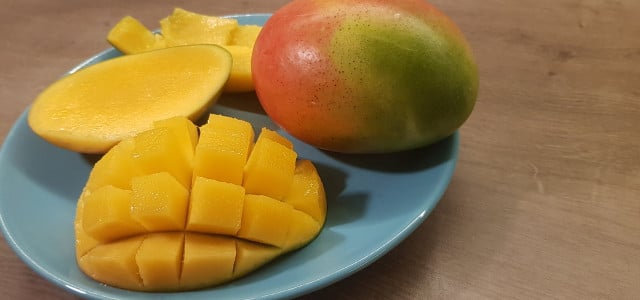Looking for the most efficient and professional way to cut mangoes? We will show you how to prep a mango like a pro with this simple method.
Cutting mangoes can be tricky to cut since their large stone or ‘pit’ is firmly lodged in the center of this delicious juicy and fibrous fruit. While you can peel the whole fruit and remove the flesh that way, there is a far simpler and more professional way to do it.
Step 1: Choose a Mango

The key to prepping your mango like a pro is to first pick a piece of fruit. You want to look for Fairtrade and organic mangoes whenever possible. You should also consider only buying mangoes when they are in season to cut down on your carbon footprint.
To determine the ripeness, squeeze the mango gently and look for ones that give slightly moderate pressure. An overripe mango will feel very squishy and unripe mangoes will feel hard as a rock. Another thing to look out for is the smell. A perfectly ripe mango will give off a sweet aroma, the stronger the scent, the riper the mango.
Tip: Contrary to popular belief, the color of the skin on a mango is not a good indicator of ripeness! The only thing to look for on the skin when choosing a mango is the absence of gashes and bruising.
Step 2 : Cut the Top Off
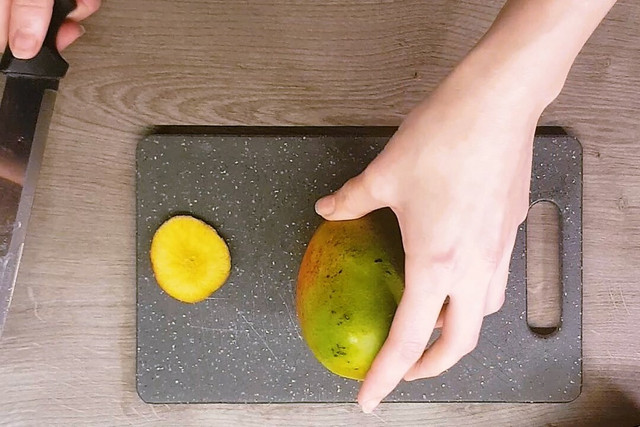


The first step to safely prepping any rounded fruit is to create a flat surface as soon as possible into the cutting process. With other fruits, such as apples, you might do this by cutting down the middle. With mangoes, however, there is a large flat pit in the center which makes this a bit trickier.
Instead, you want to cut off the top of the mango about 1 cm from where the fruit was attached to the stem. Then stand the fruit up vertically on this flat base with one of the narrower sides facing you. To help you visualize this, imagine how a football looks when placed for kicks.
Step 3: Cut the Sides Off
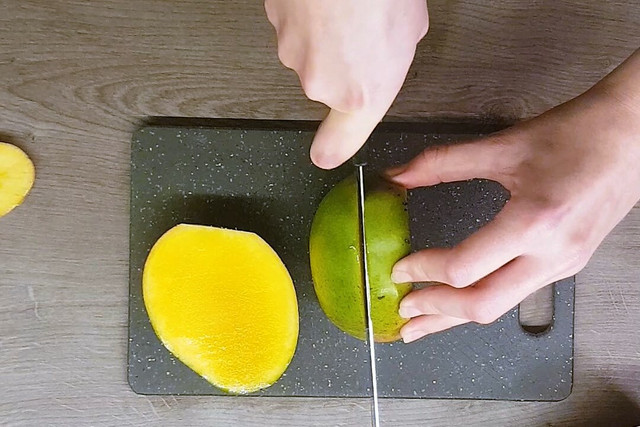


Hold the mango firmly in your non-cutting hand, starting about 1 cm from the middle of the fruit, and make long cuts gently downwards to remove the side or the “cheek”.
Stop if you feel the pit and move the knife slightly more to the side. The aim is to get as close to the side of the pit without cutting into it. Repeat on the other side of the mango. You should now have two large rounded halves with the skin still attached. You can set these aside for now.
Step 4: Remove Edges from Pit
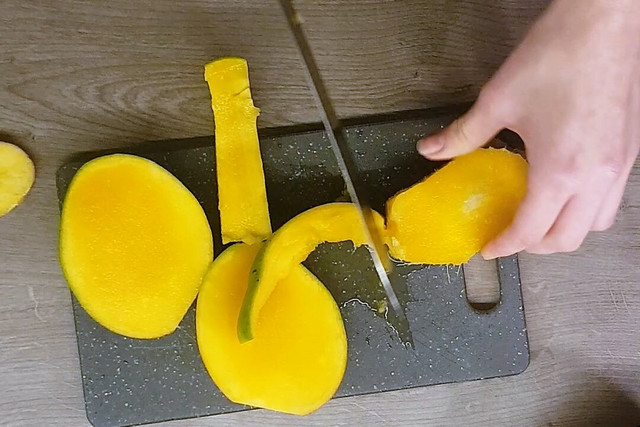


Keep the fruit upright, and use the shape of the pit as your guide to slice along one side of the remaining flesh.
Start from the top, slice down into the mango until you feel resistance, and angle the knife to follow the shape of the pit. Cut all the way to the bottom, slicing as close to the pit as possible, and repeat on the other side.
Now, you should have two small, curved strips of flesh, with the skin still attached and a skinless pit.
Feel free to take a short break to nibble all the juicy flesh off the pit, but make sure you have a napkin and a toothpick on standby.
Step 5: Slice the Flesh
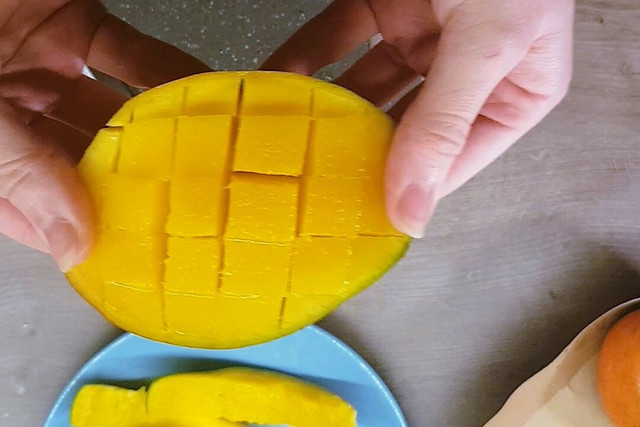


Taking a less sharp knife, hold one of the cheeks in one hand and make 1 cm slices horizontally and then vertically in the flesh. Be careful not to slice through the skin too.
You should now be able to push up on the underside of the cheek and pop it inside out to create a sort of mango cube-hedgehog. Do the same with the other cheek.
Take the edges from step 4 and make the same 1 cm slices but only horizontally.
Step 6: Remove Fruit from Skin
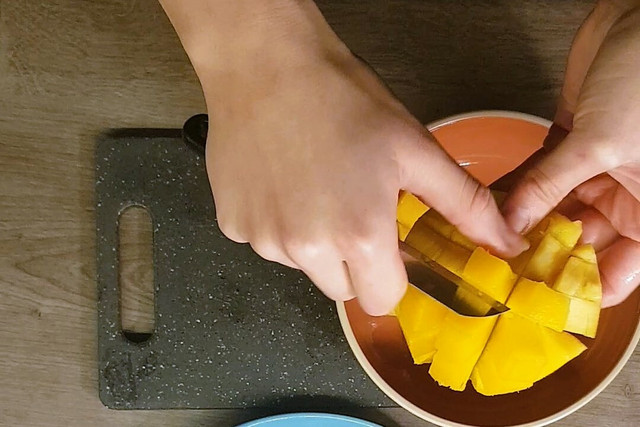


Grab a bowl. Now that the cheek is inside out, it should be easier to remove the flesh from the skin by sliding the knife as close to the skin as possible. Repeat this with the two edge pieces. You should now have a bowl full of beautifully cubed mango.
Using Chopped Mango
You can use your nicely chopped mango to make things like avocado mango salad, fruit salad, or mango sticky rice. If you have any leftovers, mango is easy to freeze. Simply lay out the squares on a sheet of parchment paper and put them in the freezer for a few hours. Remove from the sheet and place in a bag, ready to use.
Don’t throw your mango skins away! Did you know you can actually eat mango skins? They are full of fiber and vitamins that will help you keep healthy and can easily be added to smoothies.
Read more:
- Does Fruit Have Protein? 12 High-Protein Fruits
- How To Make Banana Chips: A Step-By-Step Guide
- Can You Eat Kiwi Skin? Yes — Try These 3 Recipes
Do you like this post?






